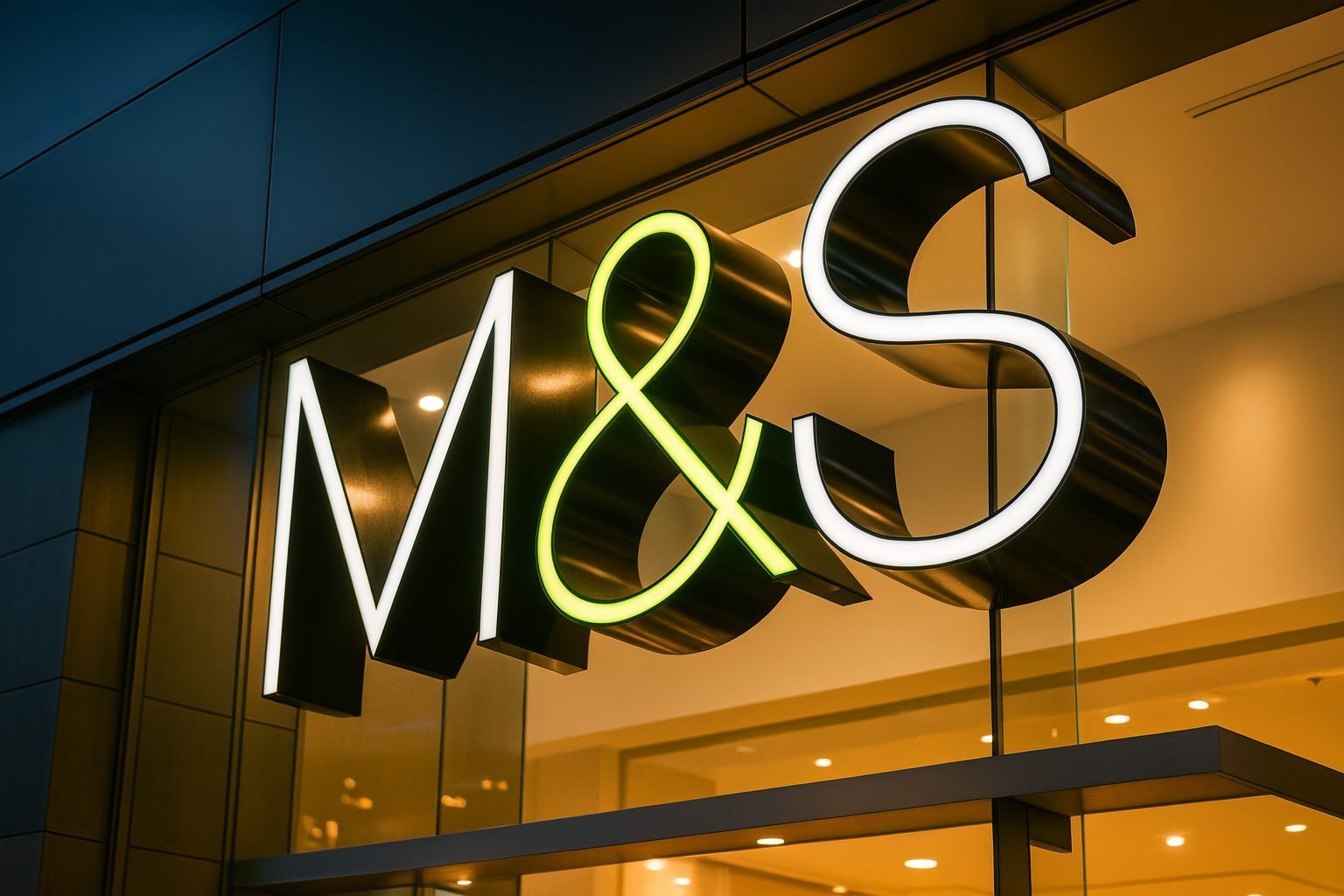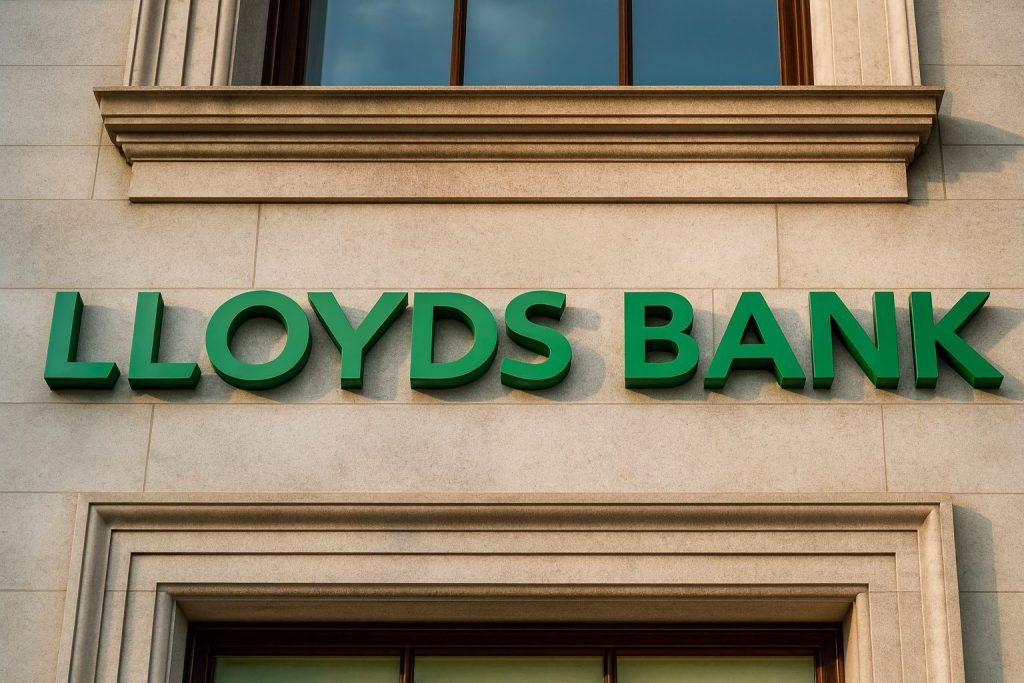Marks & Spencer Group plc (LON: MKS) goes ex‑dividend today, 27 November 2025, just as it accelerates a 500‑site UK food‑store expansion and continues to recover from a major cyberattack. Here’s what it all means for shareholders and shoppers.
Why 27 November 2025 Matters for Marks & Spencer
Thursday 27 November 2025 is a busy day in the Marks & Spencer calendar:
- M&S shares trade ex‑dividend for a 1.2p interim payout.
- Local and national media are poring over the retailer’s new “wish list” of 500 UK food‑store locations, with fresh coverage for London, Scotland and the North of England. [1]
- Investors are still digesting half‑year results hit by an April cyberattack, plus new sustainability and supply‑chain initiatives. [2]
Put together, today’s news flow turns M&S into one of the most watched UK retail names heading into the crucial Christmas trading period.
Dividend Day: M&S Goes Ex‑Dividend
M&S confirmed in its half‑year results that it would pay an interim dividend of 1.2p per share, up from 1.0p a year earlier. [3]
According to the company’s official dividend timetable: [4]
- Ex‑dividend date: 27 November 2025
- Record date: 28 November 2025
- Last DRIP / election date: 16 December 2025
- Payment date: 9 January 2026
At recent prices around 344p per share as of Wednesday’s close, that interim payout equates to roughly a 1.1% forward yield when combined with the most recent 2.6p final dividend. [5]
As usual, investors should expect today’s opening price to adjust down by approximately the dividend amount. Anyone buying MKS shares from today onwards will not receive the January payment.
500 New Food Stores: Store Expansion Story Hits the Regions
The biggest structural story around M&S right now is its aggressive food‑store expansion plan.
On 22–23 November, the retailer formally unveiled a list of 500 “potential locations” across the UK for new and renewed M&S Food stores, as part of a strategy to double the size of its food business and modernise the store estate. [6]
Key points from M&S’s own announcement:
- It wants to grow to around 180 full‑line stores and 420 food stores nationwide. [7]
- New food halls are being designed at an average 18,000 sq ft trading space, big enough for a full weekly shop rather than just top‑up baskets. [8]
- 20 new or renewed stores are scheduled to open between November and March, creating about 800 jobs. [9]
- M&S has already bought 12 former Homebase sites to turn into some of its largest standalone food stores, including a flagship in Cannock due to open before Christmas. [10]
Local “winners”: Elgin, Lancashire and London suburbs
Today, regional media is busy translating that 500‑location map into local headlines:
- In Elgin, the Northern Scot reports that the Moray town is one of 32 Scottish locations identified as candidates for a future M&S Food store. [11]
- Lancashire Business View highlights seven Lancashire towns on the target list as M&S looks to widen its footprint in the North West. [12]
- In London, the Evening Standard carries a detailed breakdown of almost 200 “wish list” areas across the capital where M&S wants new or refurbished food halls, focusing on sites with strong public transport, steady seven‑day footfall and decent parking. [13]
Other trade and retail titles, including FashionUnited and RetailDetail, frame the move as part of a broader push to rotate M&S’s estate into larger, modernised formats, with more than half of its stores expected to be in the new “renewal” design by April 2028. [14]
For property owners, local councils and jobseekers, that 500‑location list is effectively a long‑term M&S growth map.
Cyberattack Fallout Still Dominates the Numbers
Behind the store‑opening headlines lies a more sobering reality: the April 2025 cyberattack that disrupted M&S’s digital operations is still clearly visible in the company’s financials.
In its half‑year results for the 26 weeks to 27 September 2025, M&S reported: [15]
- Group sales up 22.1% to £7.97bn, helped by the consolidation of Ocado Retail.
- Adjusted profit before tax down 55.4% to £184.1m, reflecting lost online sales, extra waste and higher stock‑management costs linked to the cyber incident.
- Food sales up 7.8%, with an adjusted operating profit of £89.1m (margin 2.0%).
- Fashion, Home & Beauty sales down 16.4%, with operating profit of £46.1m (margin 2.7%).
- Incident‑related costs of £101.6m booked as adjusting items, with more to come in the second half.
- Insurance proceeds of £100m recognised to partially offset those costs.
Reuters notes that the hack forced M&S to suspend online clothing orders for seven weeks and click‑and‑collect services for nearly four weeks, while store availability was hit and logistics costs rose. Management still expects to have “fully recovered” by March 2026 and is guiding for second‑half profit at least in line with last year. [16]
The company’s dedicated “Cyber Update” page confirms that some customer data was accessed, including contact details and order history, but stresses that full payment card details and passwords were not taken, and that there is no evidence of the data being shared. Customers are being prompted to reset passwords and given detailed guidance on spotting phishing attempts. [17]
Competitors capitalise
The disruption didn’t just hit M&S’s numbers; it also created an opening for rivals. A piece in The Sun today reports that Sainsbury’s has seen grocery sales jump around 5%, attributing some of the uplift to shoppers switching during M&S’s downtime following the cyberattack. [18]
That underlines a key risk: not all customers who defect during a crisis necessarily come back.
Supply Chain Overhaul and Automation Push
In response, M&S is doubling down on its long‑running transformation plan.
A recent Reuters interview with the group’s new fashion chief outlines a “factory to floor” supply‑chain revamp aimed at doubling annual online non‑food sales to nearly £3bn. The retailer plans capital investment of £600m–£650m in 2025/26, with £200m–£250m earmarked for technology, store maintenance and logistics, plus around £120m over three years for automation to add capacity and cut costs. [19]
Alongside that, M&S has announced a major food‑supply‑chain investment of £340m, including a new automated distribution centre, as part of its “Reshaping for Growth” strategy. [20]
These upgrades are aimed at avoiding a repeat of the cyber‑driven disruption, improving stock flow to stores and enabling the sort of fuller‑range food halls the company is now planning across those 500 target sites.
RE:Spark: Decarbonising the Fashion Supply Chain
Sustainability is another thread running through today’s M&S story.
On 24 November, M&S and Schneider Electric unveiled RE:Spark, a program designed to accelerate renewable‑electricity adoption across M&S’s fashion supply chain. [21]
According to ESG Dive’s coverage:
- RE:Spark initially focuses on suppliers in China, India, Bangladesh, Vietnam and Turkey.
- It uses Schneider’s Zeigo Hub digital platform to help factories understand and procure options like solar power, green tariffs, renewable energy certificates and power purchase agreements.
- The program underpins M&S’s goal to reach net‑zero emissions across its supply chain by 2040, a significant challenge given that about 95% of the company’s total carbon footprint is Scope 3, mainly from the goods it buys. [22]
For ESG‑minded investors, RE:Spark is a notable attempt to integrate climate strategy with the practical realities of supplier energy use, rather than focusing only on operations M&S directly controls.
Staff and Boxing Day: Employee Relations Back in the Headlines
Staffing policies are also getting renewed attention today.
A Scottish Sun article on Beaverbrooks’ decision to close its Scottish stores on Boxing Day contrasts that move with M&S, noting that M&S staff will no longer automatically get Boxing Day off this year for the first time in five years. [23]
That echoes earlier reports from The Guardian, Personnel Today and others in October, which revealed that M&S has scrapped its blanket Boxing Day holiday and instead expects employees to work at least one of 26, 27 or 28 December, with availability required across the core Christmas period. [24]
The retailer argues the change is necessary to manage costs and peak demand, but the move has caused understandable frustration among some staff, adding another dimension to the brand’s reputational balancing act just as it pushes a customer‑friendly expansion.
How the Market Is Reading MKS: Share Price and Broker Views
Investors have already reacted to this cocktail of growth ambitions and execution risk.
Recent share price performance
MarketWatch data shows that on Wednesday 26 November, M&S shares rose about 4.5% to roughly 344p, significantly outperforming the wider UK market on the day. Trading volume hit around 10.9 million shares, well above the 50‑day average of 8 million, suggesting heightened investor interest. Even after that bounce, the stock remained close to 18% below its 52‑week high near 418p. [25]
With today’s ex‑dividend adjustment, the raw price chart will look a touch softer, but the recent rally hints at investors beginning to look beyond the cyberattack shock.
RBC downgrade and valuation debate
Not everyone is convinced the risk‑reward remains compelling at current levels. In October, RBC Capital Markets downgraded Marks & Spencer from “outperform” to “sector perform”, citing higher execution risk after the cyber disruption and less upside versus peers, even as it nudged its price target up to 400p. [26]
Subsequent analysis from Simply Wall St and others has argued that catalysts such as the 500‑store food expansion, automation investment and supply‑chain modernisation could still shift sentiment positively if M&S delivers on its targets and stabilises online operations. Those pieces also flag today’s ex‑dividend date as a notable milestone for income‑focused investors weighing entry points. [27]
Key Takeaways for Investors and Shoppers
Putting today’s news together:
- Income investors get a modest but growing payout, with the interim dividend up 20% year‑on‑year and a clear schedule through January.
- Growth‑oriented investors see an ambitious plan to double the food business, underpinned by heavy capex in new stores, logistics and automation – but also a reminder that big turnarounds come with real execution risk.
- ESG‑focused investors will note both the cybersecurity weaknesses exposed in April and the RE:Spark initiative to cut supply‑chain emissions by 2040.
- Employees and brand watchers will be watching closely how the Boxing Day policy plays with staff morale and public perception.
- Competitors like Sainsbury’s are already benefiting at the margins, proving how quickly market share can shift when a major retailer stumbles. [28]
For now, Marks & Spencer remains a classic “turnaround in progress”: strong food momentum, a bold store pipeline and credible sustainability work on one side; cyber fallout, operational complexity and a more cautious broker stance on the other.
As always, this article is for information only and does not constitute investment advice. Anyone considering buying or selling MKS shares should do their own research or consult a regulated financial adviser.
References
1. corporate.marksandspencer.com, 2. corporate.marksandspencer.com, 3. corporate.marksandspencer.com, 4. corporate.marksandspencer.com, 5. www.marketwatch.com, 6. corporate.marksandspencer.com, 7. corporate.marksandspencer.com, 8. corporate.marksandspencer.com, 9. corporate.marksandspencer.com, 10. corporate.marksandspencer.com, 11. www.northern-scot.co.uk, 12. www.lancashirebusinessview.co.uk, 13. www.standard.co.uk, 14. fashionunited.uk, 15. corporate.marksandspencer.com, 16. www.reuters.com, 17. corporate.marksandspencer.com, 18. www.thesun.co.uk, 19. www.reuters.com, 20. corporate.marksandspencer.com, 21. www.esgdive.com, 22. www.esgdive.com, 23. www.thescottishsun.co.uk, 24. www.theguardian.com, 25. www.marketwatch.com, 26. www.investing.com, 27. finance.yahoo.com, 28. www.thesun.co.uk







